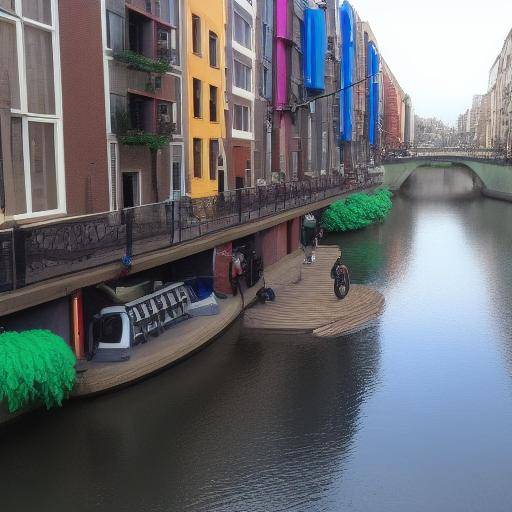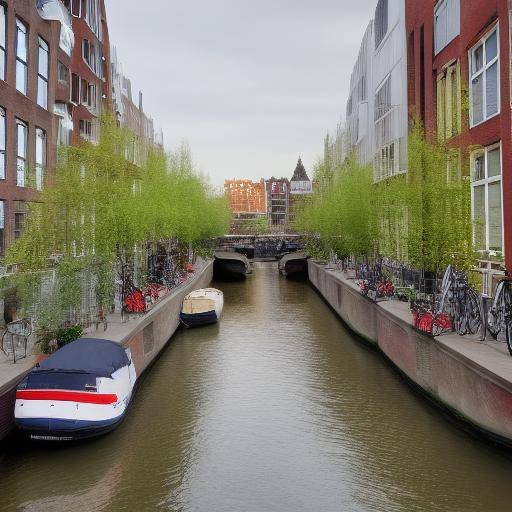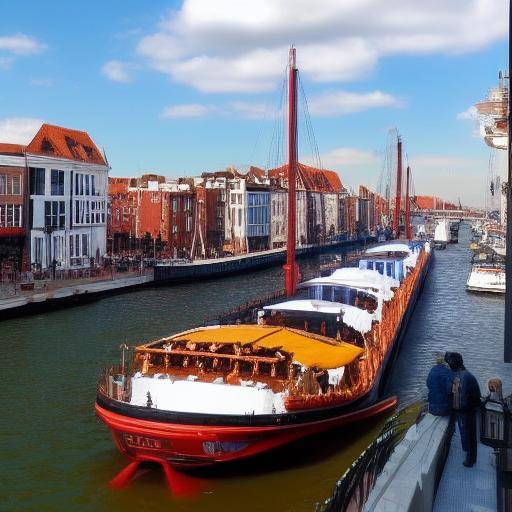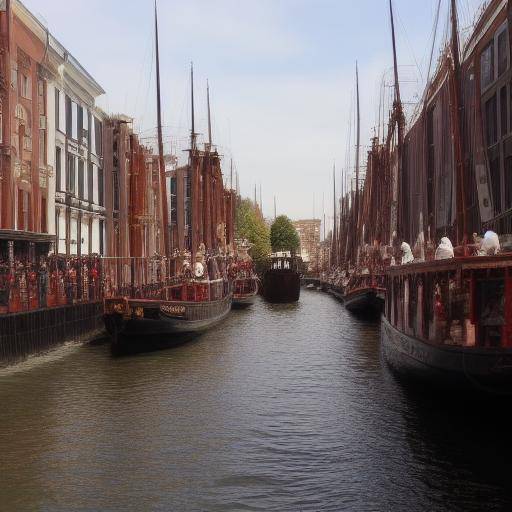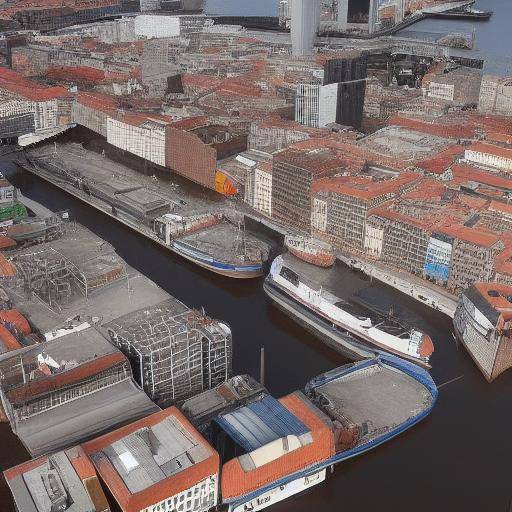
Introduction
The Amsterdam Canals, an intricate network of waterways, have been mute witnesses of history and urban engineering in Europe. From their conception to their current role in the everyday life of the city, these channels offer valuable lessons on urban geography and innovative hydraulic engineering that sustains them. Join us on this journey to discover the fascinating history, detailed analysis, best practices and future projections of this urban wonder.
History and Background
Amsterdam, known as the "North Venice", dates back to the Golden Age of the Netherlands, when it began its transformation into a commercial and cultural centre. It was during this period that the creation of channels began to take shape, with the desire to expand the city and facilitate transport and trade. Over time, the canals became a central part of urban life, with its iconic floating houses and picturesque bridges.
The engineering behind the canals has been a remarkable prowess, with carefully designed drainage systems that keep floods at bay and preserve the integrity of the city. Over the centuries, significant expansions and renovations have been carried out, marking historical milestones that witness the evolution and impact of the canals on urban geography.
Detailed Analysis
The Amsterdam Canals offer both aesthetic and practical benefits. Its beauty and singularity attract tourists from around the world, and its function as transport and trade arteries contributes to the vitality and economy of the city. However, they are not exempt from challenges, such as the need for conservation and sustainable management in a constantly developing city.
New measures are adopted to improve water management and sustainability in the canals, which sheds light on the importance of hydraulic engineering in a constantly changing urban environment. In addition, climate change resilience is a crucial issue in future channel planning, highlighting the need for continuous adaptation and innovation in hydraulic engineering.
Comprehensive review
Over the years, lessons learned from the management of the canals in Amsterdam have led to the identification of successful practices, from the design of green spaces to the intelligent management of water for the benefit of the urban community. These lessons are applicable in global urban contexts, where water management and sustainable urban geography are key to future development.
Comparative analysis
By comparing Amsterdam's canals with other examples of urban geography and hydraulic engineering in cities around the world, there are significant similarities and differences. The uniqueness of the Amsterdam channels offers valuable ideas for the sustainable development of other cities, while emphasizing the importance of adapting solutions to specific urban contexts.
Practical Tips and Accessible Tips
- Regular maintenance and restoration of channels to preserve their historical heritage.
- Integration of water management measures in urban design to promote sustainability.
- Promotion of community-based activities focused on channel conservation and environmental awareness.
Industry Perspectives and Expert Reviews
"Sustainable management of water in urban environments is essential to confront the challenges of the 21st century", says the expert in hydraulic engineering, Juan Martínez. This perspective highlights the growing importance of hydraulic engineering in the global context of urbanization and climate change.
Case Studies and Real Life ApplicationsThe detailed analysis of real cases shows how hydraulic engineering around the canals has allowed sustainable development and the creation of dynamic public spaces that foster social interaction and economic activity.
Future Trends and Predictions
Future projections indicate greater emphasis on sustainability and resilience to climate change in channel management. Innovations in hydraulic engineering will continue to play a key role in adapting channels to the challenges ahead, serving as a model for sustainable urban development worldwide.
Conclusion
Amsterdam's canals are much more than a tourist attraction; they are a master lesson on urban geography and hydraulic engineering. Its evolution over the centuries demonstrates the power of engineering to shape urban geography in a sustainable manner. Thus, we can find valuable inspiration and knowledge that can be applied in diverse urban contexts around the world.
Frequently asked questions
**1. What is the historical importance of the canals of Amsterdam?**The canals of Amsterdam have played a crucial role in the history of the city, facilitating trade, defense and urban expansion over the centuries.
**2. How do channels influence the urban geography of Amsterdam?**The canals of Amsterdam have defined the structure and identity of the city, influencing the spatial distribution, mobility and daily life of its inhabitants.
**3. What challenges do channels face today?**Conservation, water management and adaptation to climate change are key challenges for the Amsterdam channels today.
**4. How is hydraulic engineering managed around the canals of Amsterdam?**Hydraulic engineering is managed in a comprehensive manner, incorporating drainage, water conservation and sustainable development measures.
**5. What is the impact of the canals on the daily lives of the inhabitants of Amsterdam?**The canals of Amsterdam offer a wide range of benefits, from recreation to connectivity and cultural identity, enriching the urban life of the city.
**6. How is it expected to evolve the Amsterdam channels in the future?**Channels are expected to continue to evolve in line with sustainable urban development trends, focusing on resilience to climate change and the conservation of historical heritage.
In short, the beauty of the canals of Amsterdam goes beyond its aesthetics; they are a testimony of hydraulic engineering and integrated urban planning. As we look to the future, it is crucial to learn from these lessons of urban geography to forge more sustainable and resilient cities around the world.

